Autistic Identity Needs Autistic Language
Challenging the medicalised framework of autism by advocating for a cultural model grounded in Autistic experience.
I was reading a powerful article by Teo Byrne, founder of SENDwise Hub, about the way pathologising language shapes how people perceive Autistic special interests. She writes about how the word obsession distorts something joyful and meaningful, turning it into something clinical, compulsive, and shameful.
This captured perfectly why I created the 10 Pillars of Autistic Culture, not as a checklist or a diagnostic tool, but as an invitation to reframe how we understand Autistic identity. Not pathologised. Not medicalised. Not something that belongs to psychologists or anyone in the medical world at all, but rooted in lived experience, history, and culture. Our culture.
Just like how calling a special interest an “obsession” rewrites joy into pathology, defining autism through the DSM turns a set of human traits into a list of impairments. It takes a brain style and repackages it as a disorder. But these so-called “symptoms” are often our strengths, and our differences are part of a larger cultural pattern that has persisted across time.
We are not broken versions of neurotypicals. We are members of a vibrant, detailed, pattern-loving, truth-telling culture.
For most of the 160,000 years that Autistic people have been part of the human story, we didn’t need words like “obsession,” “deficit,” or “impairment” to understand who we were. We didn’t need a diagnosis. We didn’t need the DSM. That entire book has only been around for a tiny blip in our history and autism has only been included in it since 1980.
That’s not even 50 years.
In other words: for over 99.9% of our time on this planet, Autistic people defined ourselves by how we lived, not how we were labeled.
And we still can.
We need to keep asking like SENDwise Hub did. “What if we stopped defining autism by what it lacks and started describing it by what it is?”
That’s the lens of the 10 Pillars. They are not requirements, and they’re not exhaustive. They are simply ways to recognise and affirm Autistic experience as culture, not condition.
Here’s what the 10 Pillars View of Autistic culture looks like:
1. Bottom-Up Processing
We don’t guess first, we observe first. Not only that, we don’t understand why anyone would do it any other way. We build understanding from patterns, logic, and detail. Our minds detect nuance others miss, which is why we often excel in strategy, analysis, and systems. This isn’t a deficit in “big picture” thinking—it’s an investment in the truth beneath the surface.
2. Rhythmic Communicating
Echolalia. Scripting. Tangents. Repetition. Autistic communication is layered, rhythmic, and often musical. Our speech patterns are shaped by pattern recognition, sensory rhythm, and emotional resonance. We speak in ways that are both accurate and authentic.
3. Norm-Challenging
We don’t “fail to conform,” we just don’t always see the reason to do it. Whether in gender, language, or ideology, we often reject arbitrary rules in favor of deeper truths. Literal thinking isn’t naivety. It’s precision. It’s integrity. And it’s often the reason we see injustice so clearly.
4. World-Building
Autistic minds are drawn to structure, story, and immersive detail. We don’t just imagine better worlds, we design them (Orchestra them! Mastermind them!). From crafting entire universes to perfecting niche systems, Autistic world-building is a cultural legacy, not a coping mechanism.
5. Pattern-Matching
We gather. We notice. We collect. We compare. Our minds are uniquely attuned to spotting relationships between ideas, data points, or abstract concepts. We connect dots others didn’t even see. Our brains are filled with data hunger and curiousity.
6. Game-Changing Innovation
Autistic contributions have shaped history from science to music to technology. We innovate not by fitting in, but by thinking differently. We challenge the status quo not for attention, but because it doesn’t make sense. And that disruption is often where change begins.
7. Boldly Creating
Autistic creativity is unfiltered and often deeply sensory. Whether it’s music, movement, or visual art, we create from the core of who we are. Our creative output is a dance between body and self-regulation from which we can’t escape.
8. Predictably Comforting
We cherish consistency. It gives us room to breathe. From routines to rituals to repeated meals, predictability is not avoidance, it’s connection. It’s how we regulate. It’s how we rest.
9. Justice-Seeking
Fairness matters. So does truth. When the world gaslights us, we notice. When systems fail the vulnerable, we speak. Our emotional intensity in the face of injustice is not immaturity, it’s integrity. You’re welcome.
10. Passionate Superfanning
We love hard. We love deep. Fictional characters become friends. Franchises become family. We don’t “escape into fantasy.” We connect through it. Superfanning is community, comfort, and creativity all wrapped into one.
This is Autistic culture. Not broken behavior. Not disordered functioning. Culture.
The pillars aren’t a replacement for diagnosis and they won’t get you work or school accommodations, but they are a reorientation — a reminder that we’ve always existed, long before medicalized language tried to pin us down.
If you see yourself in these pillars, welcome to Autistica. We’re saving you a seat.



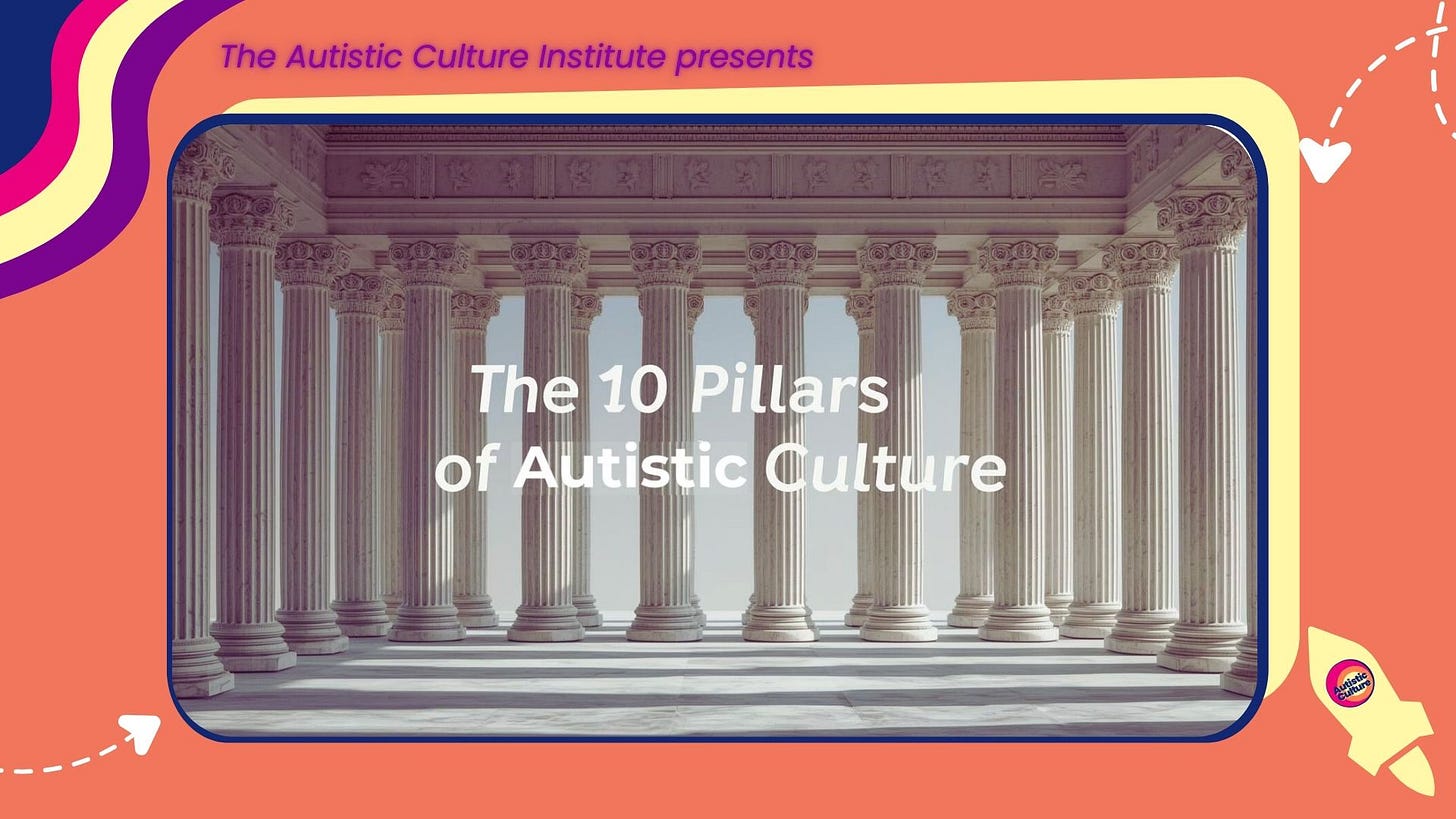
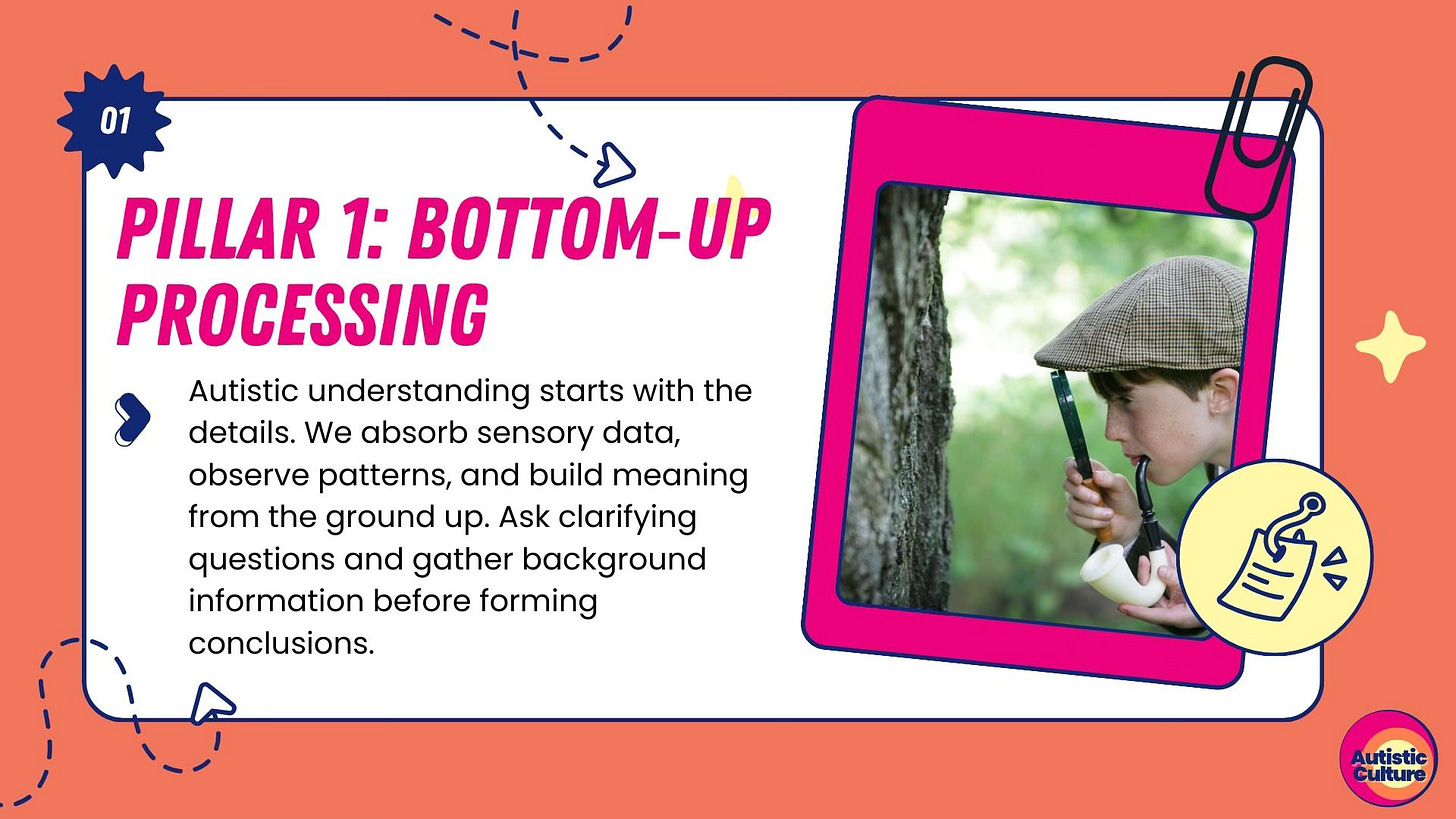
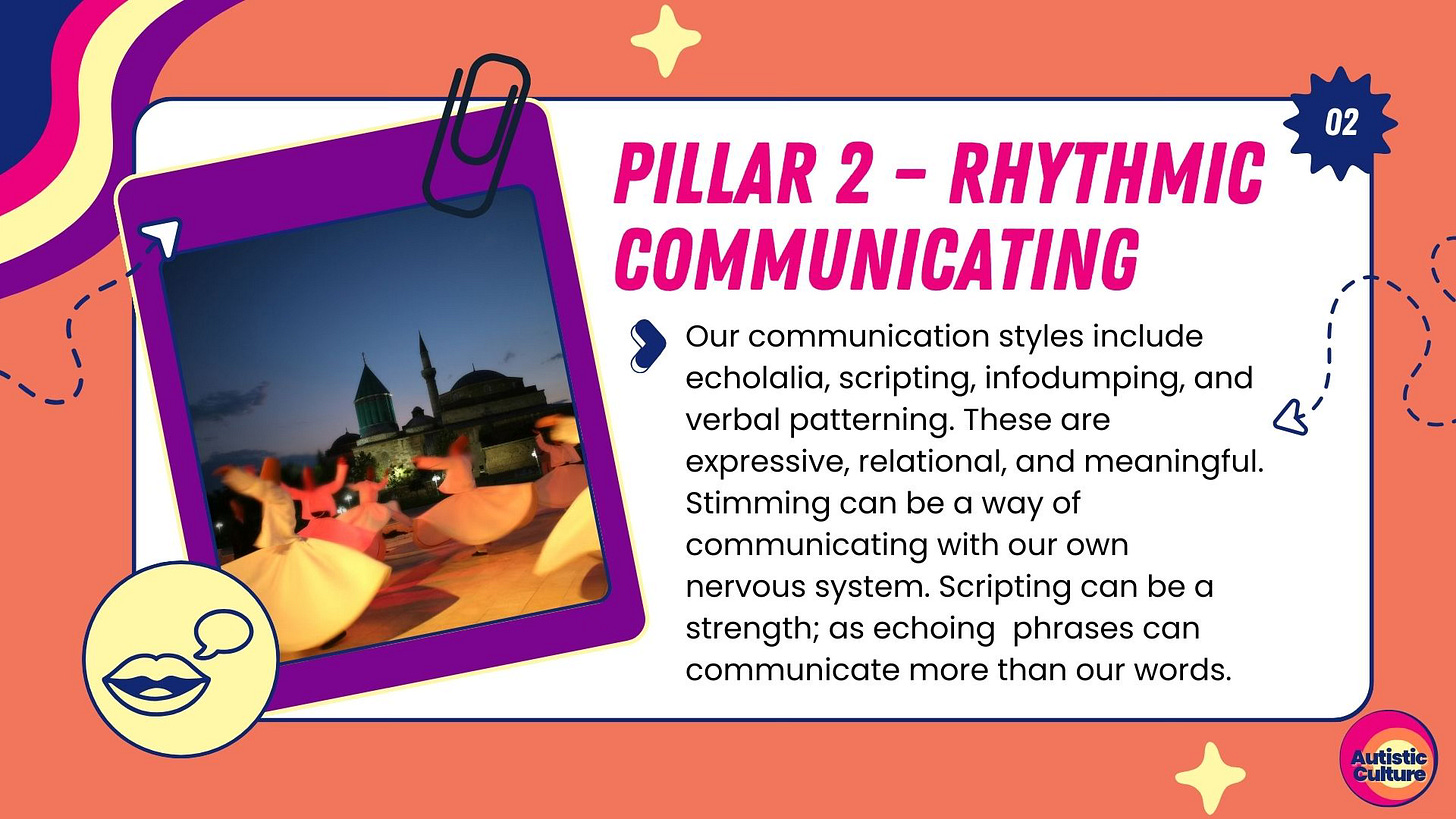
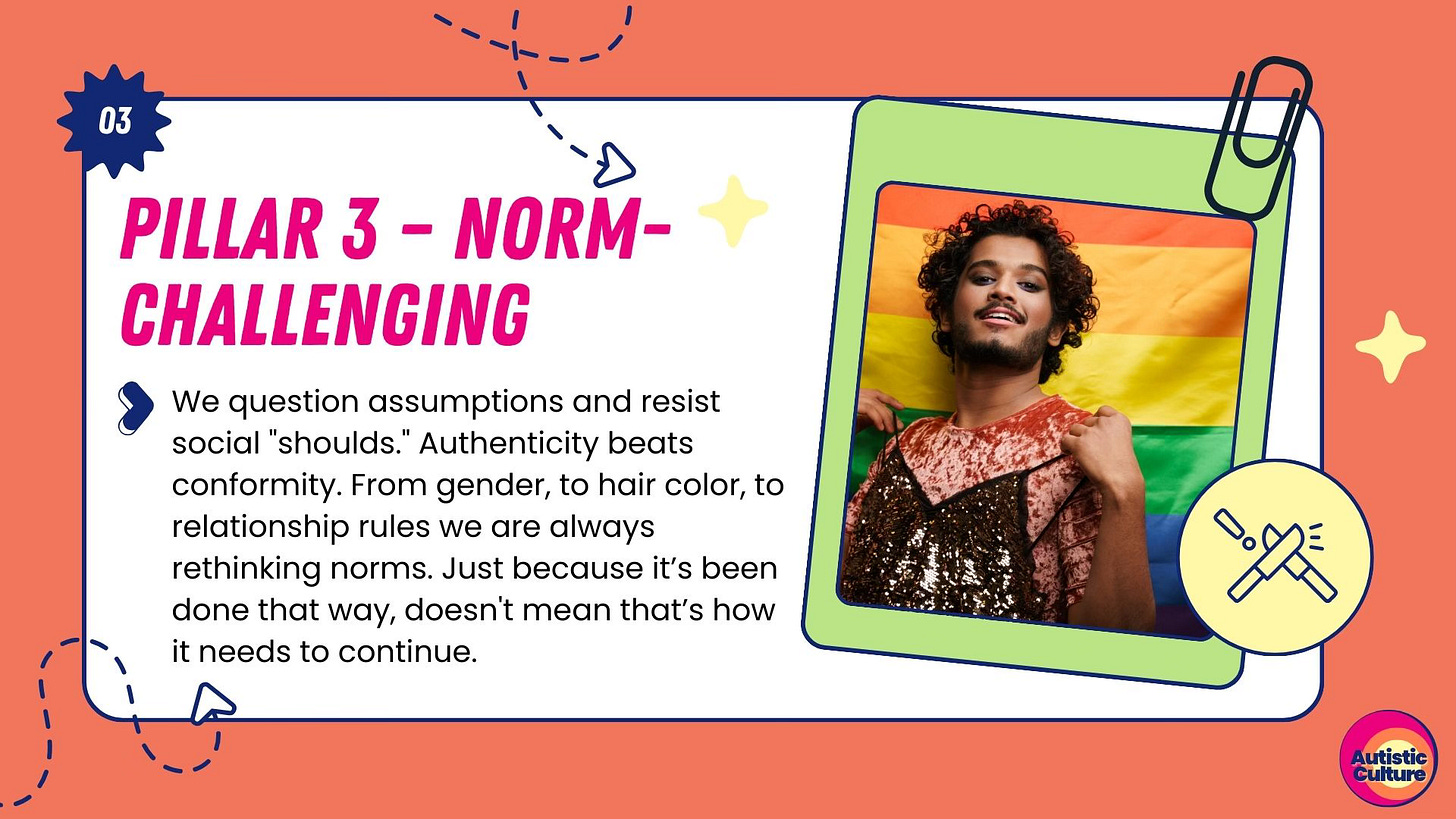
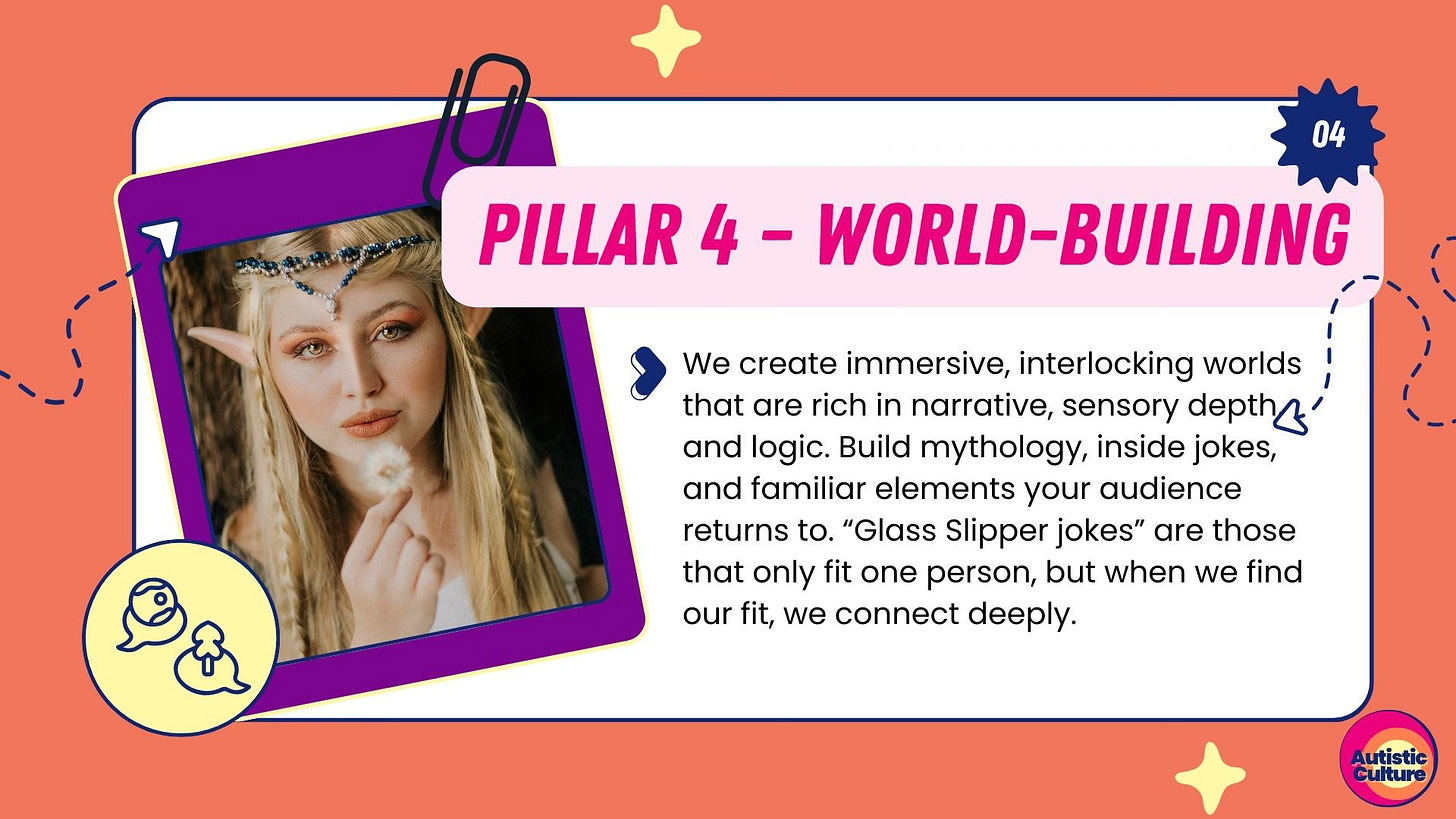
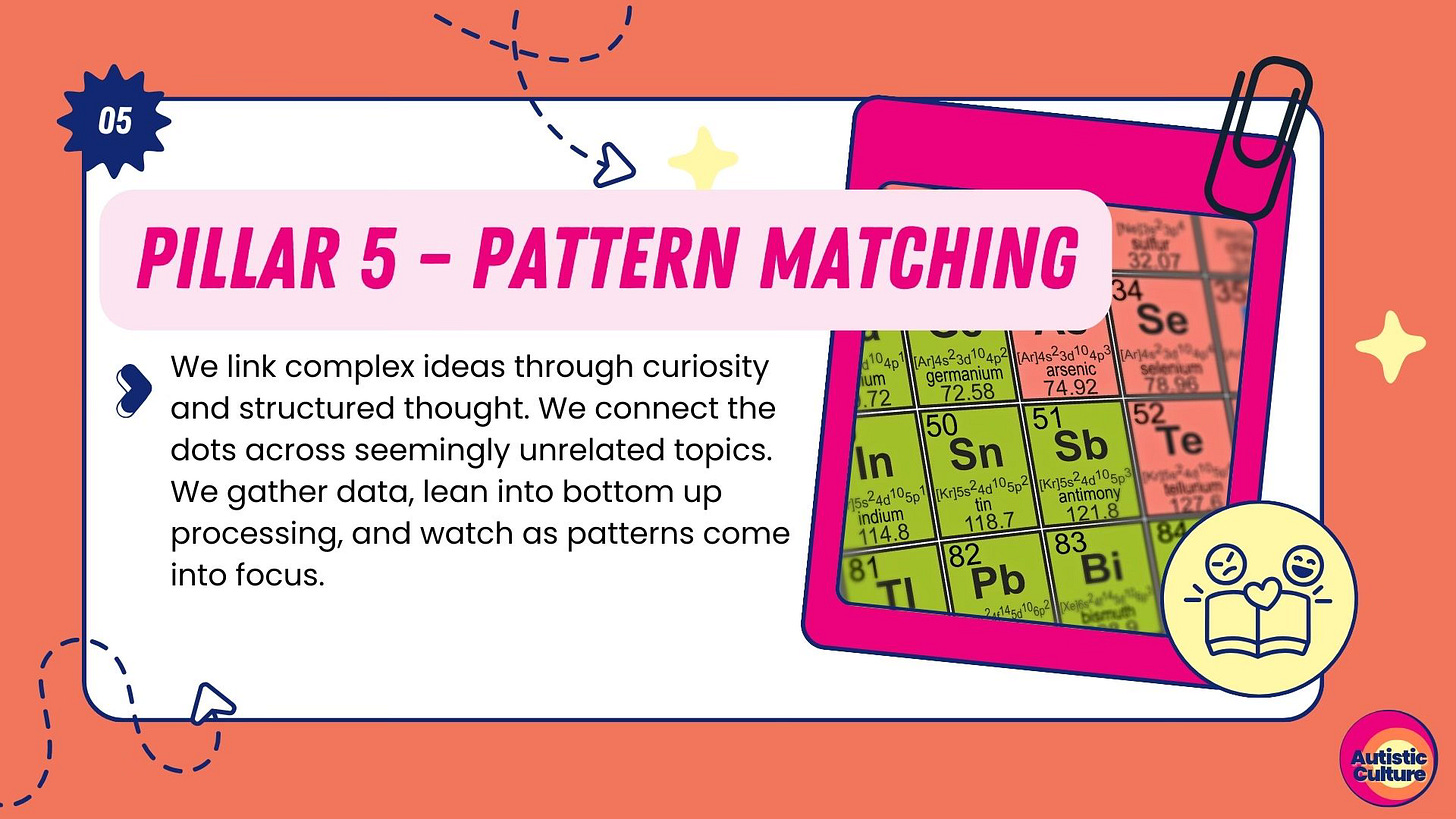
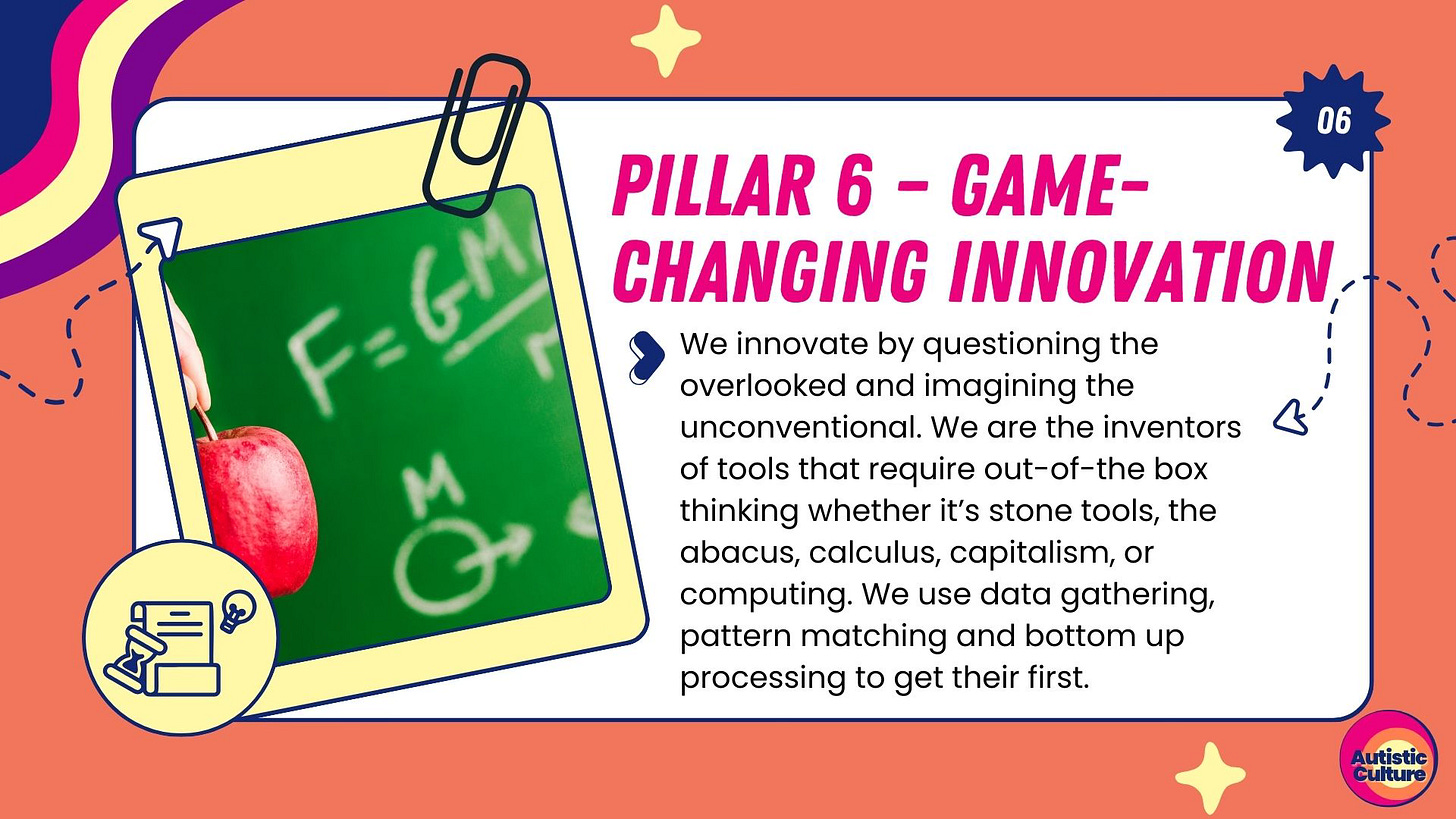
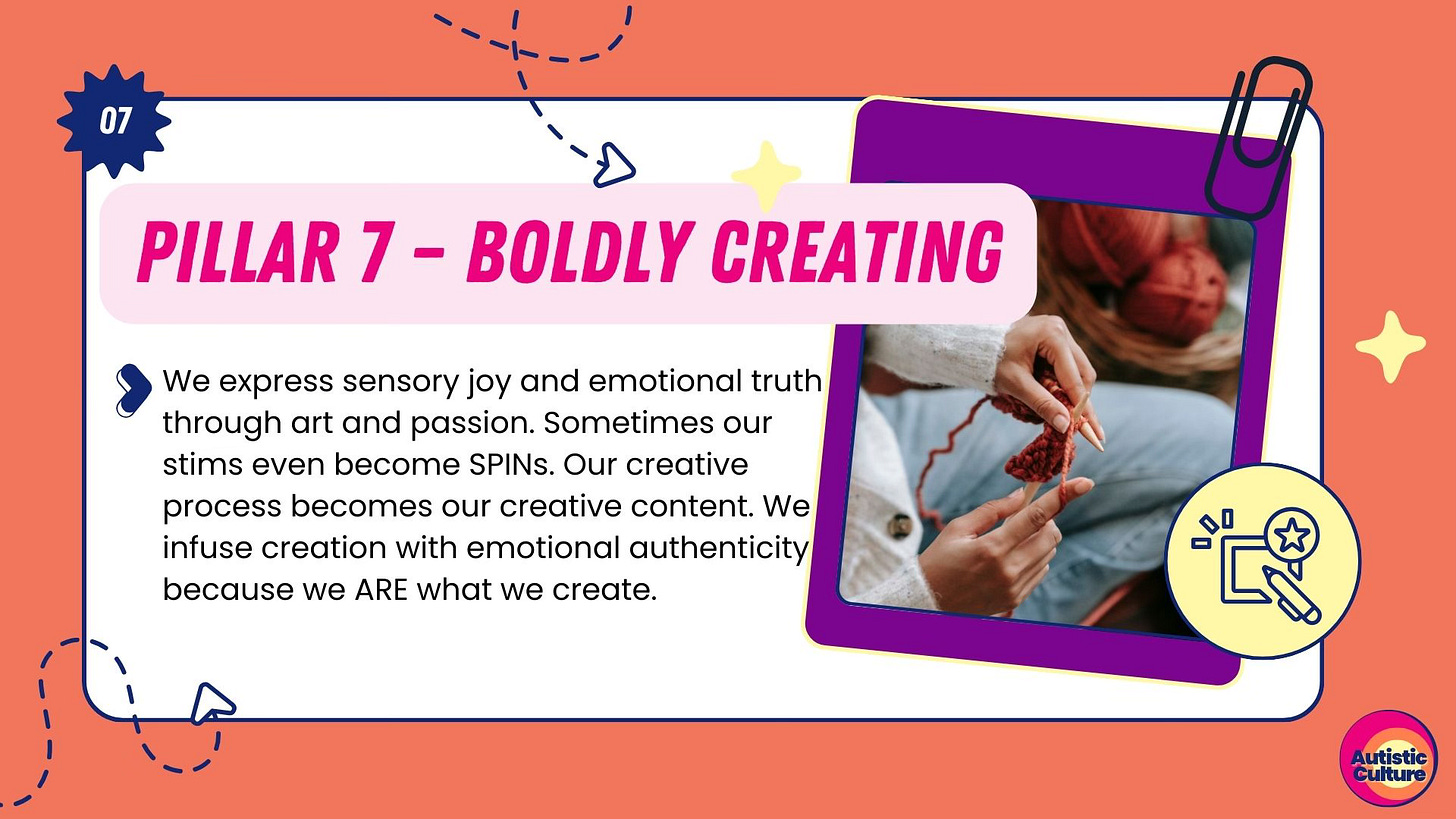
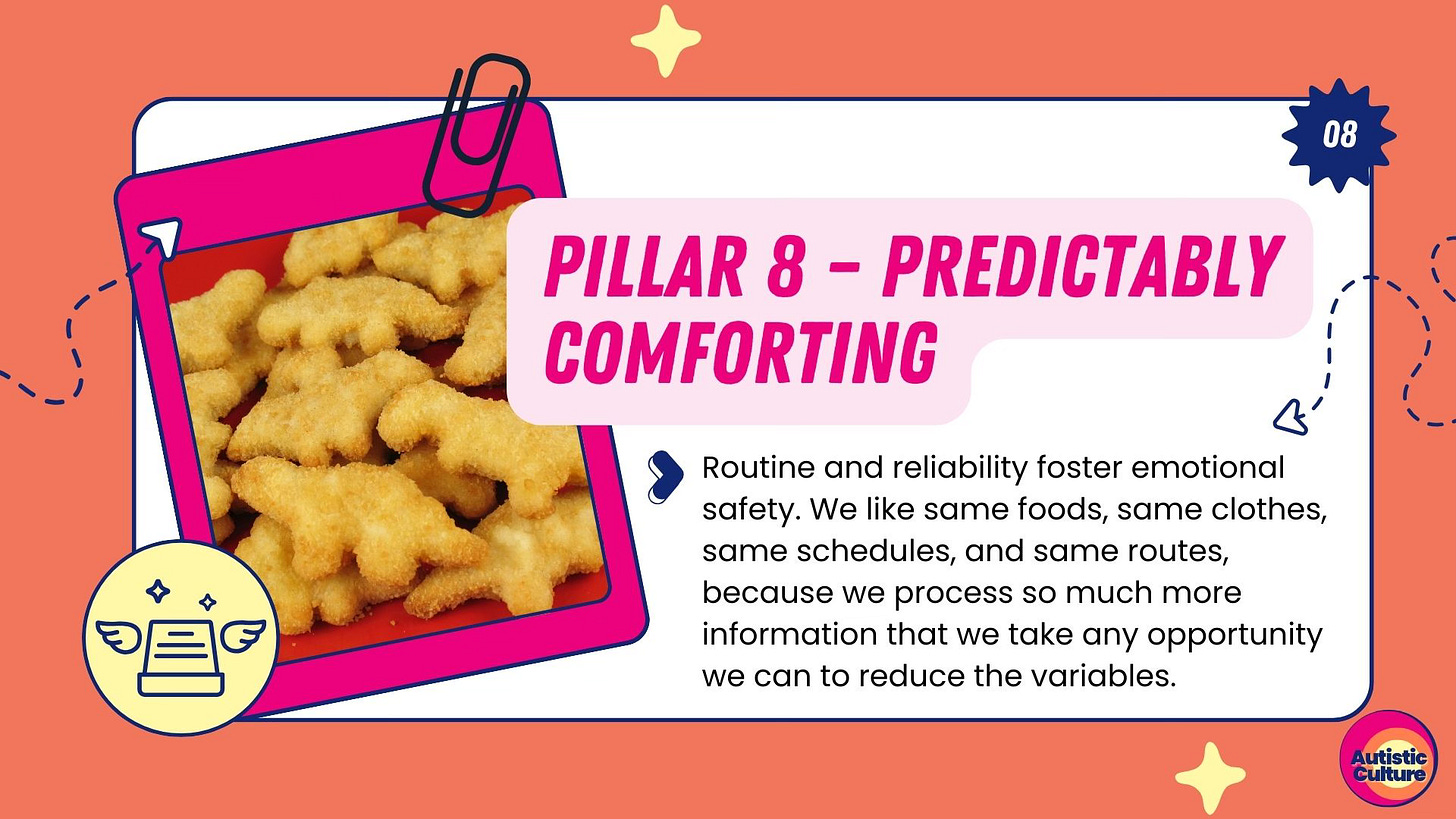

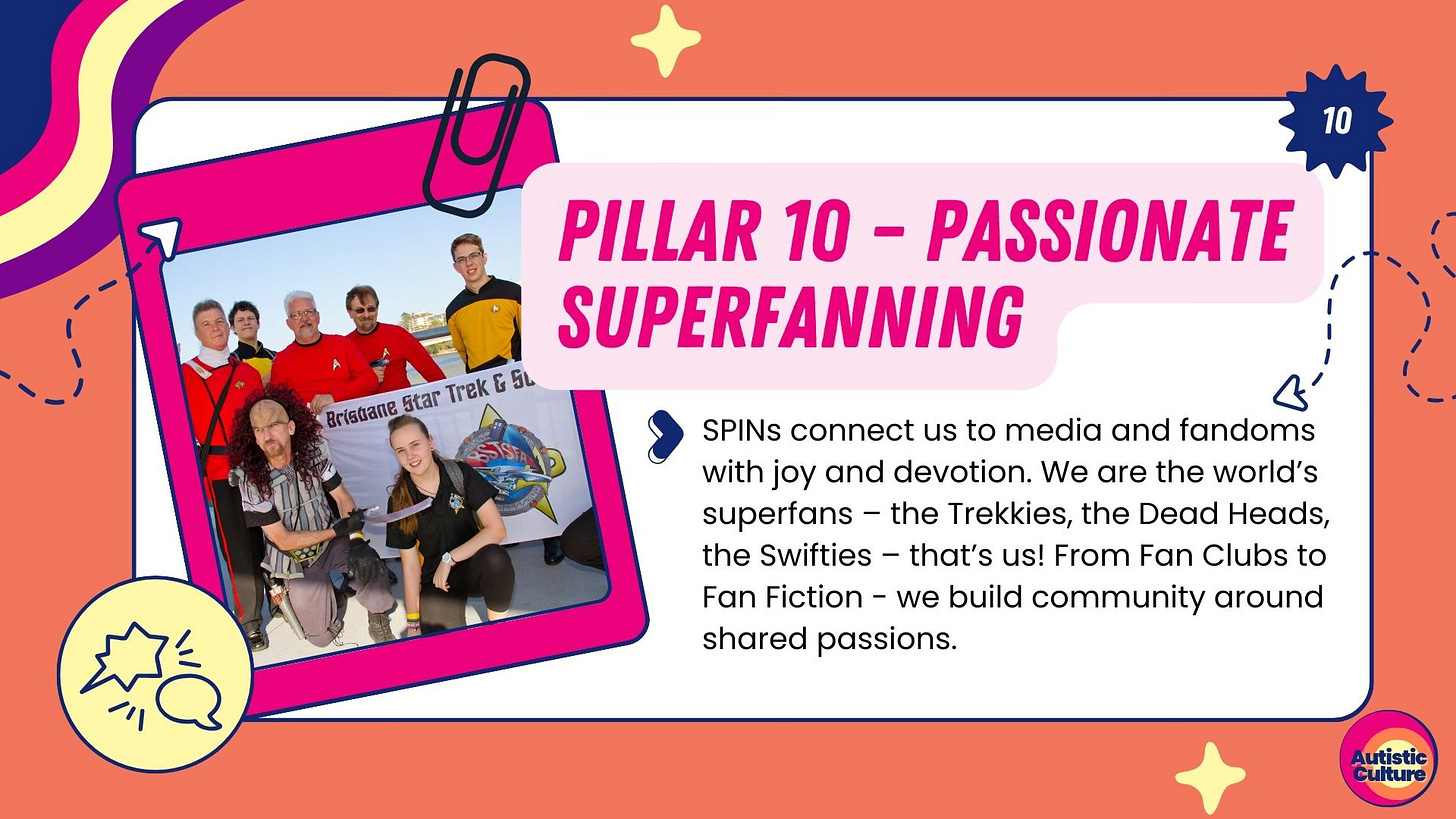
Pillars 2, 4, and 7 are part of Gestalt Language Processing - in the research in English since Peters’ 1977 paper. Then Prizant in the 80’s. Then Blanc’s Natural Language Acquisition model moving forward.
So I guess it’s my autistic sense of justice to name this. So many of us autistic GLPs get locked out of literacy when this very well studied language processing style gets passed off as an ‘autism thing.’
Very insightful! It's very interesting to look at our culture and identity through these pillars.